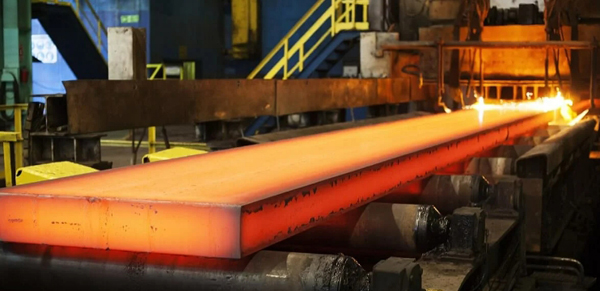
In steel production, calcium desulfurization is a key process in terms of quality and cost. This is particularly important in the BOF process.
Carbide treatment eliminates unwanted iron oxide that is carried into the ladle during tapping. It also prevents oxidizing alloy additions and attacks on refractories. This results in lower carbon pick-up and improved slag quality.
Compared to the BOF slag the first ladle slag at the beginning of the secondary metallurgy process already has a significantly higher desulfurization potential, due to the reduction conditions within the slag phase caused by slag modifiers and synthetic slags. This is mainly based on the fact that the fundamental basicity of the slag has already reached high values after tapping.
The lower MnO content in the slag also significantly slows down the desulfurization. This is mainly due to the formation of a non-reactive shell around the MnO, which also prevents oxygen from entering this area of the slag and initiates the following reactions:
Therefore it is very important to optimally match all the individual treatment processes in order to achieve a consistent and effective deep desulfurization for pipeline grades. This requires the use of dynamic models to observe and predict quality relevant parameters for the individual treatment steps, as well as the development of countermeasures when deviations from target values are observed.

Deep desulfurization in the BOF results in a low concentration of sulfur, but also increases the level of nonmetallic inclusions such as alumina and silica. These are effectively modified by calcium treatment, a process that uses CaSi wire to inject calcium into the steel melt. The resulting [Mg] can react with the oxide inclusions in the steel, transforming them into spinels and periclase (in Si-killed steel) or alumina and silica in Al-killed steel.
This modification is a result of the fact that alumina and silica are less reactive than iron in the presence of [Mg] compared to the reaction rate for oxidation. The high solubility of calcium in steel limits the rate of inclusion modification.
In order to achieve an efficient inclusion modification, the steel section should be soaked for a period of time at the proper temperature. The duration of this soaking depends on the thickness of the section and the desired internal modifications.
The casting process is the last step in the steel production chain. It is the process where a large portion of the total energy consumption and material use takes place. The casting processes also produce significant quantities of waste. For example, the steel castings that have to be cropped during each of the hundreds of ingot casting cycles, resulting in substantial amounts of waste metal (see the image below).
A major source of these defects is the sprue, which is the passage through which the molten steel is poured into a permanent mould. The sprue must be sufficiently sized to ensure that the desired quantity of molten metal is deposited in the mould.
In the case of this shell molded steel casting, hot tears were formed in the longitudinal braces, requiring extensive and costly repair welding. These hot tears could be avoided by reviewing the casting design and methoding. The analysis also gives insight into the effects of different methoding changes on the cooling curves, thereby predicting the potential for cold shots and cold laps and on the possibility of gas entrapment or enttrainment in the cast product.
Due to the limited size of raw materials reserves, steel producers have to deal with a growing number of impurities in their feed stocks. Especially the nonmetallic inclusions have to be reduced in order to comply with stricter quality requirements of their customers, like the API standard that requires the sulfur content for pipe production to be limited to S max 0.0024%.
The most widely used method to reduce these oxide inclusions is the deep desulfurization (HD) in the ladle. In this process, a prescribed amount of calcium in the form of CaSi wire is added to the HM ladle and the chemical composition of the nonmetallic inclusions in the resulting modified inclusions is changed.
The desulfurization efficiency depends on several production parameters, mainly the basicity of the slag. However, the actual basicity can differ from plant to plant. Consequently, it is also not possible to determine a general evaluation criteria for the HD process.

Write a Message